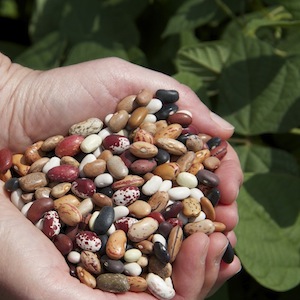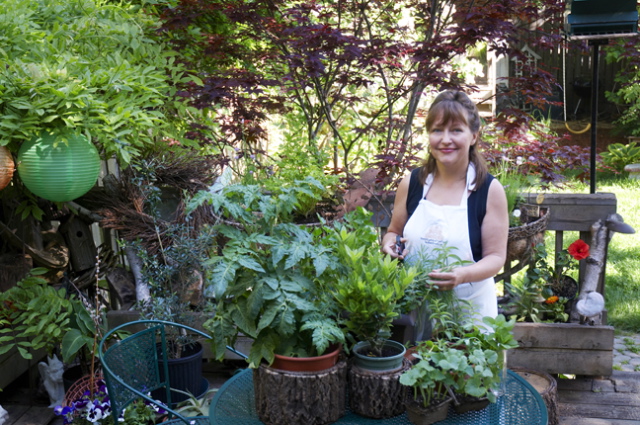by Malcolm Jolley

Photo: Nina Popovic
OCTA sounds like a nefarious network headed by a master criminal in a James Bond movie. But, while the thirtysomething, chic, blond woman at its head looks like she could take on 007, Rebecca LeHeup’s only mission is to make people feel at home in Ontario by eating a little local food. In fact, the Ontario Culinary Tourism Alliance is an organisation of made up of 24 restaurant, hotel and hospitality organisations (with a total membership exceeding 10,000 establishments) dedicated to the idea that tourists might like to eat food from Ontario, when they’re in Ontario. LeHeup explains: “We’re staying focussed to work with communities throughout the province, so that local sustainable agriculture can form the base of Ontario tourism.”
LeHeup, who works with OCTA’s Membership Director , Magdalena Kaiser-Smit, sees OCTA’s role as comprising three main areas. First, developing the infrastructure for culinary tourism, which is everything from cold storage facilities to distribution networks – just getting the food available to her membership. Second, she works aggressively to identify the natural assets that communities have, but may not realise. Third, LeHeup wants all Ontario regions to be “market ready”, which means being able to tell their stories on a national and international level.
OCTA began as a result of an Ontario government initiative in 2005. At the time, five regions were identified by the Tourism Ministry as targeted culinary hotspots: Toronto, Ottawa, Niagara, Prince Edward County and Muskoka. OCTA would act as a central organisation to foster culinary tourism across the regions. The founding meeting was held in May of that year in Prince Edward County, where LeHeup lives and was at the time the Executive Direct or of Taste The County. Since taking the directorship over in 2008, LeHeup has recruited seven more regions, including Grey-Bruce, Elora and Fergus, Durham, Northumberland, Norfolk, Peterborough and the Kawarthas and Stratford. This year she hopes to engage with the regions of Northern Ontario as well as those old counties and towns in the South, like Windsor, who have yet to join.
I first met LeHeup (who has become a friend of mine) when she was the executive Director of Taste The County, an organisation that promoted culinary tourism in Prince Edward County. Her success with such projects as the Taste Trail, a series of tourist friendly signs and maps showing wineries and good food attractions, helped make the County one of the province’s fastest growing destinations. While she works out of a Toronto office a few days a week, she keeps PEC as her home base. LeHeup’s passion for culinary tourism can be traced back to her first job in the county, working with Grant Howes from the County Cider Company: ” He and I restored an 1867’s pig barn where we housed his tasting room and I had an artisanal gourmet food shop.” After a few years of waiting out the slow winter season, LeHeup decided to trade the counter for a desk and devoted herself to transforming the sleepy county south of Belleville into a top culinary tourism destination.
Since LeHeup’s stewardship, it appears that OCTA’s efforts are getting noticed. On February 12, LeHeup and Chef Jamie Kennedy, a long-time advocate of local foods who shares an enthusiasm for culinary tourism, will travel to Vancouver for a presentation on their work to BC Tourism. Kennedy will cook, while LeHeup explains how using local ingredients enhances tourism experiences. Kennedy is also a participant in the organisations’ hallmark Summit, held every year at the Royal Agricultural Winter Fair in Toronto. In 2009 the summit attracted 350 participants, chiefly producers and restaurateurs hoping to connect to each other and create supplier networks.
For the last year and a few months LeHeup has clocked thousands of kilometres around the province and spoke at countless events explaining to any one who will listen why culinary tourism is good for everyone: the hospitality industry, producers, tourists – you name it. It seems to be working, as more interest is raised and menus increasingly add local fare and communities find innovative ways to celebrate local foodways. Though LeHeup is certainly not ready to rest on her laurels – there is much, much more ot be done she insists – she is clearly enjoying her work and can’t wait to help out at the next festival or feast.
Malcolm Jolley is the editor of Good Food Revolution.







IF ANYONE CAN MAKE THE CULINARY-TOURISM VISION IN ONTARIO A
REALITY, IT IS REBECCA. I HAVE MET AND WORKED WITH FEW OTHERS THAT HAVE HER PASSION TO MAKE THE MARRIAGE OF SUSTAINABLE AGRICULTURE, OUR CULINARY EXCELLENCE AND THE ONTARIO TOURISM EXPERIENCE, A MUST FOR EVERYONE AND ANYONE VISITING THIS JURISDICTION, MEMORABLE AND WITH VERY FEW EXCEPTIONS.
J. CHARLES GRIECO
THE ONTARIO HOSTELRY INSTITUTE